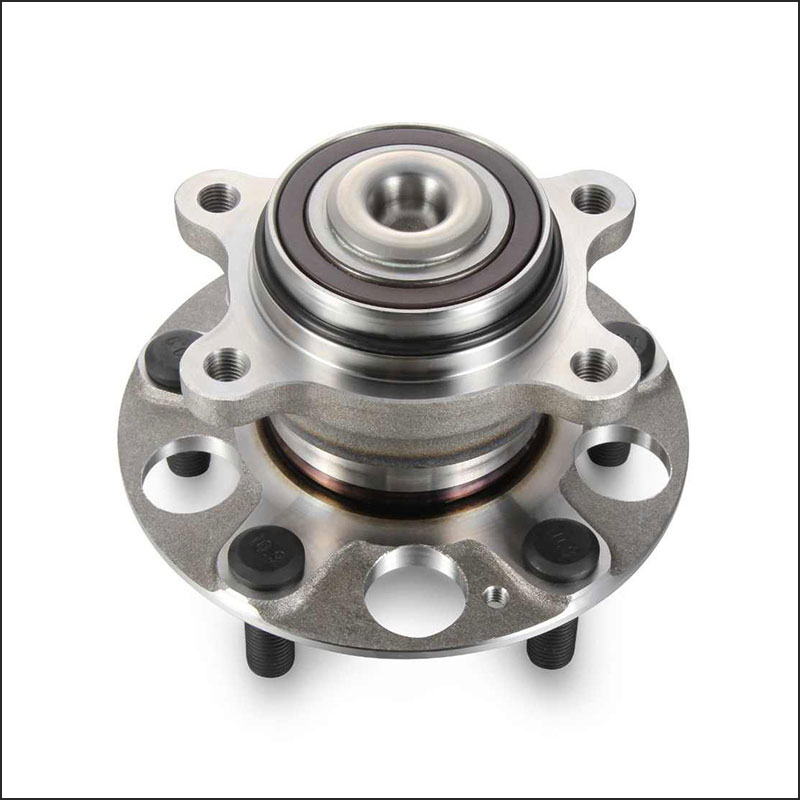Components of a wheel hub bearing
2023-10-18
A wheel hub bearing, also known as a wheel bearing assembly or hub assembly, is a critical component in modern automotive vehicles. It is located at the center of the wheel hub and is responsible for supporting the weight of the vehicle and allowing the wheels to rotate smoothly.
Key features and components of a wheel hub bearing:
1. Hub Assembly: The hub assembly is a pre-assembled unit that contains various components necessary for wheel rotation. It typically consists of the wheel hub, bearings, seals, and other components.
2. Wheel Hub: The wheel hub is a hollow metal structure that attaches to the vehicle's suspension system. It serves as the mounting point for the wheel and provides a central location for the wheel to rotate around.
3. Bearings: Wheel hub bearings are typically tapered roller bearings or ball bearings, depending on the vehicle's design. These bearings enable smooth rotation of the wheel and carry both radial and axial loads generated during vehicle operation.
4. Seals: Seals are used to protect the bearings from contaminants like water, dirt, and debris. They help to maintain the integrity of the bearing lubrication and prevent premature wear.
5. Bolts and Fasteners: The wheel hub assembly is secured to the vehicle's suspension using bolts and fasteners.
Function and Importance:
The primary function of a wheel hub bearing is to allow the wheels to rotate freely with minimal friction and wear. As the vehicle moves, the wheels experience various forces, including the weight of the vehicle, lateral forces during turns, and axial loads during braking. The wheel hub bearing absorbs these forces and ensures smooth and reliable wheel movement.
Wheel hub bearings are crucial for vehicle safety and performance. If a wheel hub bearing becomes worn or damaged, it can lead to various issues, such as:
1. Uneven tire wear: Worn wheel bearings can cause irregular tire wear, leading to the need for premature tire replacement.
2. Noise: A damaged wheel bearing often produces a humming, grinding, or growling noise, especially during turns.
3. Vibrations: Vibrations in the steering wheel or vehicle body can result from a faulty wheel hub bearing.
4. Reduced handling and braking performance: A damaged bearing can affect the vehicle's stability during braking and cornering.
Regular maintenance and inspection are essential to identify any potential issues with wheel hub bearings. Timely replacement of worn or damaged bearings is crucial to ensure the safety and proper functioning of the vehicle's wheels. If you suspect any issues with your wheel hub bearings, it's recommended to have your vehicle inspected by a qualified mechanic.



